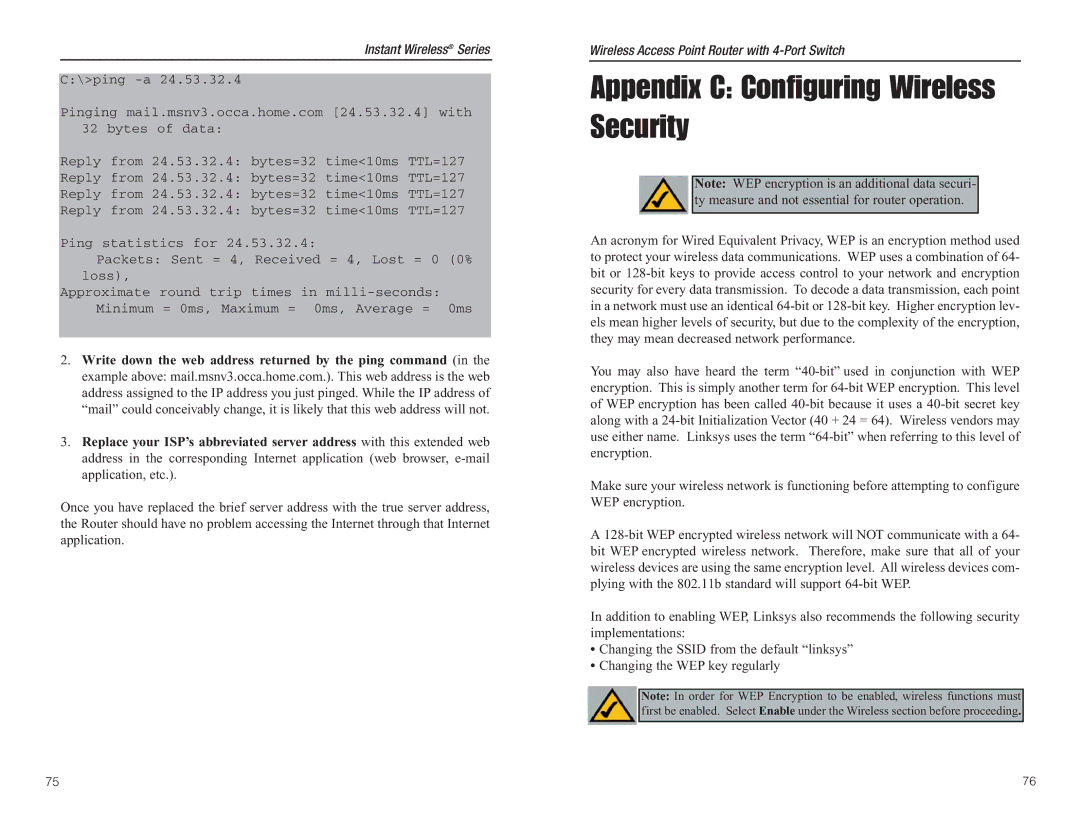
Instant Wireless® Series
C:\>ping
Pinging mail.msnv3.occa.home.com [24.53.32.4] with
32 bytes of data:
Reply from 24.53.32.4: bytes=32 time<10ms TTL=127
Reply from 24.53.32.4: bytes=32 time<10ms TTL=127
Reply from 24.53.32.4: bytes=32 time<10ms TTL=127
Reply from 24.53.32.4: bytes=32 time<10ms TTL=127
Ping statistics for 24.53.32.4:
Packets: Sent = 4, Received = 4, Lost = 0 (0% loss),
Approximate round trip times in
2.Write down the web address returned by the ping command (in the example above: mail.msnv3.occa.home.com.). This web address is the web address assigned to the IP address you just pinged. While the IP address of “mail” could conceivably change, it is likely that this web address will not.
3.Replace your ISP’s abbreviated server address with this extended web address in the corresponding Internet application (web browser,
Once you have replaced the brief server address with the true server address, the Router should have no problem accessing the Internet through that Internet application.
Wireless Access Point Router with
Appendix C: Configuring Wireless Security
Note: WEP encryption is an additional data securi- ty measure and not essential for router operation.
An acronym for Wired Equivalent Privacy, WEP is an encryption method used to protect your wireless data communications. WEP uses a combination of 64- bit or
You may also have heard the term
Make sure your wireless network is functioning before attempting to configure WEP encryption.
A
In addition to enabling WEP, Linksys also recommends the following security implementations:
•Changing the SSID from the default “linksys”
•Changing the WEP key regularly
Note: In order for WEP Encryption to be enabled, wireless functions must first be enabled. Select Enable under the Wireless section before proceeding.
75 | 76 |
